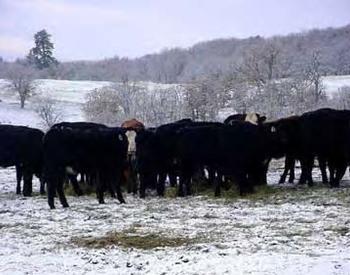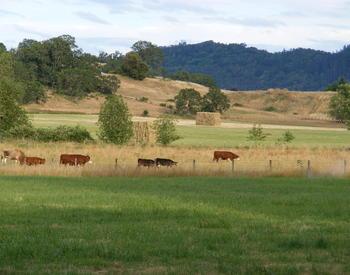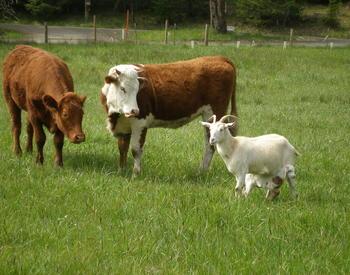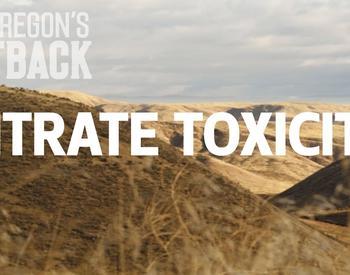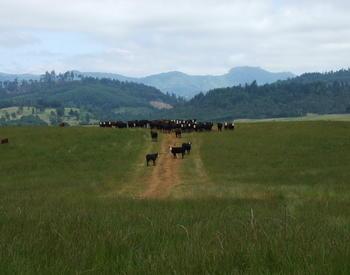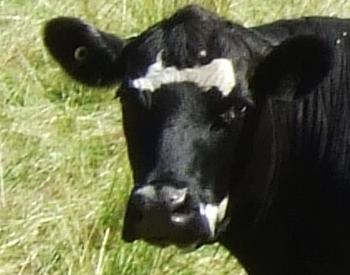Introduction
Disease is an abnormal state of the normal structure or function of an organ, or body system. The clinically abnormal state is exhibited as pain and/or symptoms associated with the altered function of the affected organ. For example, a calf with a broken jaw will show signs of pain associated with the broken bone, but will also show signs of weight loss because it cannot eat properly, and can even show signs of metabolic acidosis because it drools and therefore looses the bicarbonate contained in saliva. Animals with subclinical disease do not show signs of pain or altered function.
Diseased animals require treatment, which is a cost to producers. Additionally, diseased animals do not perform at their maximum ability, adding to the cost of production due to low returns. Early detection of disease usually allows better outcomes when treatment is promptly implemented. Therefore, it is important to recognize disease early, know how to treat affected animals, and how to prevent disease in the rest of the herd.
The different systems used for beef cattle production need to be taken into account when determining the most economically important diseases in the industry because they represent different risk factors. A cow-calf operation will suffer most losses from those diseases that cause infertility, abortion and calf death. Feedlots will suffer most from those diseases, usually respiratory in nature, that cause weight loss and death.
Types of Diseases
In general, diseases can be classified into one of the following categories:
- Genetic (congenital and hereditary)
- Traumatic
- Metabolic and nutritional
- Neoplastic or cancerous
- Infectous
Hereditary diseases
Hereditary diseases are those that are transmitted from parents to their offspring. They are most commonly observed with inbreeding due possible breeding of two animals carrying a copy of a problem gene. Hereditary diseases usually have no treatment but can be effectively prevented by use of proven genetics and avoiding inbreeding. There are tests available to diagnose carriers for many genetic diseases.
Congenital diseases
Congenital diseases are present at birth but are not transmitted genetically from the sire or the dam. They are usually developmental mishaps often due to exposure to either viruses or toxins during pregnancy. Because congenital diseases develop during pregnancy there is no treatment for these conditions, thus control is based on prevention. Attention to the diet of pregnant cows, including noxious plant control in pastures, can prevent toxinassociated congenital abnormalities.
Traumatic diseases
Injuries are usually associated with hazards in the environment such as nails, wires and sharp objects. Other hazards such as inappropriately-sized alleyways for the animal being worked need to be considered. Treatment success will depend on severity and extent of the injury, and is improved by prompt intervention. Injuries can be prevented by careful attention to the environment in the ranch.
Metabolic diseases
The main metabolic diseases observed in beef cattle in Oregon are associated with mineral deficiencies. Some of these metabolic diseases have no effective treatment, and others may evolve rapidly to a point where treatment may only be partially palliative.
White muscle disease
White muscle disease is the common name for the disease associated with selenium and vitamin E deficiency. It commonly affects rapidly growing animals (calves less than 3 months of age), but if severe deficiency occurs, it can affect older calves, fetuses (abortion), yearlings and even adult cattle. Clinical signs related to muscle fiber degeneration are non-specific. Most commonly the large muscles of the legs are affected (“down” calves), however, if the heart is affected (especially in young calves) all that is observed is “sudden” death and can only be diagnosed during necropsy. Therefore, vitamin E and selenium deficiency should be considered in any disease without an obvious diagnosis. Adequate supplementation of the dams during pregnancy with selenium and vitamin E will prevent this disease. Additionally, there are commercially available injectable solutions to administer to calves (not to pregnant cows), although caution is required because these products have a narrow margin of safety. For more information on this condition please see publication CL628 in the Cow-Calf Management Guide.
Grass tetany
"Grass tetany" is the common name for the down cow syndrome observed with conditions of low magnesium. Down cows can also be seen with low levels of calcium (“Milk fever”). These conditions are associated with lush pastures (spring), because they contain high levels of potassium which interfere with magnesium and calcium uptake. They are most commonly observed in nursing cows because they also excrete both magnesium and calcium in the milk, increasing the imbalance. Although the conditions can be effectively treated with slow intravenous administration of magnesium and calcium salts, cows can die if treatment is delayed for more than a few hours. These cows tend to be aggressive when treatment is effective. For more information on this condition please see publication CL627 in the Cow-Calf Management Guide.
Endophyte toxicosis
Endophyte toxicosis is a condition observed in animals of any age after eating endophytecontaminated grass or hay. Endophytes are fungi that live on some grasses such as tall fescue and ryegrass and produce toxins called alkaloids. These toxins are consumed with the grass and cause vasoconstriction (narrowing or closing of arteries and veins) on distal areas in the body. Initial signs include staggers but, if the animals continue to eat contaminated feed, the affected areas can eventually die and slough off. The most typical areas affected are ears, tail, teats and feet. When the feet are affected chronically, the hooves slough off (“fescue foot”), and don’t regenerate, which means that the animals will never grow the affected hooves again. This very painful condition has no treatment and affected animals should be euthanized. For more information on this condition please see publication CL626 in the CowCalf Management Guide.
Cancerous diseases
Cancer eye
“Cancer eye” is the common name for squamous cell carcinoma, a disease commonly observed in breeds that have lack of pigmentation around the eyes such as Hereford, Simmental and their crosses. It is a slow growing cancer that usually affects only one eye, although it can affect both eyes. This condition is usually seen in older cattle, especially when exposed to excessive sunlight (lack of shade, high altitude). Affected eyes can be treated surgically by removing the cancerous mass to prevent metastasis. Affected animals will be subject to condemnation when submitted to slaughter. Because cancer eye is in part hereditary, control should be aimed at eliminating susceptible animals and their offspring. For more information on this condition please see publication CL640 in the CowCalf Management Guide.
Bovine leucosis
Bovine leucosis is the disease caused by infection with the bovine leukemia virus (BLV), therefore it is both a cancerous and an infectious disease. Infected cattle usually have slow growing tumors localized on various lymph nodes throughout the body. Cattle can become infected at any time by exposure to infected blood (multiple-use of needles, biting flies and gauge dehorning), although it is believed that most become infected at birth by ingestion of infected colostrum. Clinical signs are non-specific related to mechanical obstruction or compression of different organs. There is no treatment for bovine leucosis and therefore control should be aimed at prevention by using one needle per animal, controlling biting flies and dehorning with cauterizing methods that prevent bleeding.
Infectious diseases
Most common infectious diseases in beef cattle are restricted to three body systems: the reproductive system, the digestive system and the respiratory system. While reproductive diseases are restricted to breeding operations, digestive and respiratory diseases are common to all beef operations. Clostridial disease can affect any body system and thus is present in all production systems. Common clostridial diseases are tetanus, black leg, red water and botulism. Clostridial organisms are present in the environment and cause disease when they gain access to the body through broken skin or other damaged tissues and release their toxins. Intensive treatment can overcome clostridial disease in some animals if the disease is diagnosed early. However, clostridial disease progresses rapidly and often no clinical signs are observed before death of the affected animals. Therefore annual vaccination is the best control method. Clostridial species are the most common diagnosed organisms in submissions from beef cattle to the Veterinary Diagnostic Laboratory at Oregon State University in the past 3 years (Table 1).
Providing a clean and quiet area for calving will reduce stress and encourage early colostrum consumption. Delays in colostrum intake can result in exposure to disease organisms before the calf is adequately protected, putting newborn calves at risk for both digestive and respiratory diseases. “Calf scours” is the common name for diarrhea in calves less than 3 weeks old. Calves will become infected with common microorganisms that can cause diarrhea such as cryptosporidia, rotavirus, coronavirus, coccidia, and other parasites, by sucking teats contaminated with feces. For more information on this condition please see publication CL645 in the Cow-Calf Management Guide.
| Preliminary diagnosis (by owner or veterinarian) | Diagnosis | Positive samples |
|---|---|---|
| Abortion (146 submissions) | Miscellaneous bacteria | 26 |
| Neospora | 2 | |
| BVD | 1 | |
| IBR | 1 | |
| Respiratory (334 submissions) | Miscellaneous bacteria | 86 |
| Pasteurella / Mannheimia | 51 | |
| Mycoplasma | 23 | |
| BVD | 22 | |
| Haemophilus | 11 | |
| BRSV | 4 | |
| IBR | 2 | |
| Salmonella | 1 | |
| Scours (313 submissions) | Cryptosporidia | 50 |
| Rotavirus / Coronavirus | 50 | |
| Coccidia | 29 | |
| Parasites | 28 | |
| Miscellaneous bacteria | 11 | |
| E. coli | 7 | |
| BVD | 4 | |
| Salmonella | 2 | |
| Unspecified (363 submissions) | Miscellaneous bacteria | 103 |
| Clostridium | 46 | |
| E. coli | 38 | |
| Leptospira | 1 | |
| Listeria | 1 | |
| Mycobacteria | 1 |
Respiratory diseases
Respiratory diseases cause the largest economic losses in the beef industry. Extensively managed cattle can suffer losses because of harsh environmental conditions without adequate shelter. Intensively managed cattle operations can experience respiratory losses due to increased contagious contacts. The most common organisms associated with respiratory disease in cattle are viruses such as BVD, BRSV, PI-3, and IBR, and bacteria such as Pasteurella /Mannheimia and Haemophilus. Most commonly, respiratory diseases start as viral infections that reduce the defenses of the animals, allowing subsequent infection with bacteria. Treatment of respiratory disease is frustrating, protracted, and expensive in both treatment and animal losses. Antibiotics may kill the bacteria but do nothing to heal the scarred lung tissue, a process which may take months or may never heal. Therefore, the best control for respiratory diseases is a solid vaccination and biosecurity protocol that prevents introduction of infected animals. For more information on these conditions please see publications CL606 and CL607 in the Cow-Calf Management Guide.
Venereal diseases
During breeding season, females are exposed to bulls which may be carrying venereal diseases such as trichomonosis and vibriosis (campylobacteriosis). Both diseases cause early embryonic death. Vibriosis has been controlled by treatment of infected cows (intrauterine infusions) and by vaccination of cows and bulls. Although the disease is nowadays rare, vaccination is a cheap insurance policy. Trichomonosis is a reportable disease in Oregon. There is no FDA-approved effective treatment for trichomonosis, and vaccination has been shown helpful only in cows, and only to reduce losses in exposed herds. Therefore, trichomonosis is best controlled by testing and eliminating any positive bulls. Reproductive problems in bulls can be diagnosed during a routine breeding soundness exam (BSE), which is therefore highly recommended prior to introducing any bull into the herd and prior to each breeding season. For more information on these conditions please see publications CL683 (trichomonosis) and CL683 (vibriosis) in the CowCalf Management Guide.
Abortions
Abortions are another major problem in beef cattle operations. The major infectious diseases implicated in abortion storms are BVD, IBR, leptospirosis and neosporosis. However, these pathogens have not been frequently isolated from abortion submissions to the Oregon State University Veterinary Diagnostic Laboratory in the past few years (Table 1). Because there is no effective way to “treat”/fix an abortion, the best control method is prevention. There have been major advances in the development of vaccines that can effectively prevent abortion in cattle due to BVD, IBR and leptospirosis. Some of these vaccines have very specific guidelines that need to be followed to protect the fetus, and thus it is highly recommended to consult with a local veterinarian to design a customized vaccination protocol for each farm according to the specific risk factors of the farm and the surrounding area. Although brucellosis has been eradicated in most of the U.S., most states still require active vaccination of breeding females. For more information on these conditions please see publications CL681 (abortion), CL662 (leptospirosis) and CL663 (brucellosis) in the CowCalf Management Guide.
Johne’s disease
Johne’s disease is a chronic untreatable disease of cattle due to Mycobacterium avium subsp. paratuberculosis (MAP). It is thought that animals become infected as young calves by suckling on manure-infected udders. However, clinical signs typically are observed in adult cattle (> 4 years). Bacteria enter the animal orally and attack the lining of the small and large intestine. The animal’s body reacts by walling off the infected part, which results in the thickening of the intestinal wall. This thickening prevents absorption of nutrients in the diet, and therefore the animals are thin in spite of a good appetite. Because of the chronic and untreatable nature of this condition, animals get worse with time, becoming very thin and weak, and eventually dying. The only option to avoid this disease is by preventing exposure of newborn calves to infected manure. This is best accomplished by testing and isolating positive adult cows before calving. Optimal management should include culling these positive animals and their calves. If this is not possible, infected animals should be managed as a separate group, and never use “infected” pastures for healthy cattle.
Table 2 shows a summary of the most common risk factors associated with the major diseases of concern for beef cattle.
| Type of Disease | Risk Factors |
|---|---|
| Hereditary | Inbreeding – animals carrying bad genes |
| Congenital | Viruses – BVD Plant toxins – Locoweed, Lupines, Sudan grass |
| Traumatic | Environment – nails, wires, sharps, etc. Facilities and equipment – chute and alley size |
| Metabolic: White muscle disease | Nutrition – vitamin E and selenium deficiency Production state – rapid growth |
| Metabolic: Grass tetany | Lush pastures (spring) Production state – lactating |
| Metabolic: Endophyte toxicosis | Endophyte contaminated feed – tall fescue, ryegrass |
| Neoplastic: Cancer eye | Genetics – lack of pigmentation around the eyes Environment – excessive sunlight (lack of shade, high altitude) |
| Neoplastic: BLV | Infected animals Infected colostrum Reusing needles for multiple animals for injectable drugs / vaccines Biting flies |
| Infectious: Respiratory | Environment – inclement weather, crowding, dust Infected animals – BVD persistent infected Lack of vaccination |
| Infectious: Scours | Calves born in dirty areas Calves nursing on dirty teats Infected animals – BVD persistent infected |
| Infectious: Abortion | Infected animals – BVD persistent infected, Trich-positive bulls/cows Lack of vaccination |
| Infectious: Clostridial disease | Trauma Lack of vaccination |
| Infectious: Pinkeye | Environment – dust and grass awns Infected animals Face flies |
Conclusions
Diseases occur when the fine balance of life is altered. Although the environment cannot always be controlled, control of risk factors and rational vaccination programs will reduce the prevalence of diseases in the herd. As seen above, some diseases don’t have effective treatment, and others may progress rapidly beyond effective treatment options. Vaccination against infectious diseases usually helps in decreasing the severity of the disease and the number of animals infected, but may not completely prevent the disease in the herd.
References
- Bagley, C. In: Cow-Calf Management Guide, CL607.
- Bagley, C. In: Cow-Calf Management Guide, CL681.
- England et al. In: Cow-Calf Management Guide, CL645.
- England et al. In: Cow-Calf Management Guide, CL662.
- Foster, L. In: Cow-Calf Management Guide, CL640.
- Griffin, D. In: Cow-Calf Management Guide, CL606.
- Hansen, D. In: Cow-Calf Management Guide, CL663.
- Hansen, D. In: Cow-Calf Management Guide, CL683.
- Maas and Kvasnicka. In: Cow-Calf Management Guide, CL627.
- Maas et al. In: Cow-Calf Management Guide, CL628.
- Parsons and Bohnert. In: Cow-Calf Management Guide, CL626.
This document is part of the Oregon State University – Beef Cattle Library. Prior to acceptance, this document was anonymously reviewed by two experts in the area.






